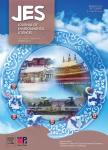Chemical characteristics and source apportionment of PM_(2.5) in a petrochemical city: Implications for primary and secondary carbonaceous component
Chemical characteristics and source apportionment of PM2.5 in a petrochemical city: Implications for primary and secondary carbonaceous component作者机构:School of EnvironmentHenan Normal UniversityKey Laboratory for Yellow River and Huai River Water Environment and Pollution ControlMinistry of EducationHenan Key Laboratory for Environmental Pollution ControlXinxiang 453007China State Key Laboratory of Atmospheric Boundary Layer Physics and Atmospheric ChemistryInstitute of Atmospheric PhysicsChinese Academy of ScienceBeijing 100029China Center for Excellence in Regional Atmospheric EnvironmentInstitute of Urban EnvironmentChinese Academy of ScienceXiamen 361021China University of Chinese Academy of ScienceBeijing 100049China
出 版 物:《Journal of Environmental Sciences》 (环境科学学报(英文版))
年 卷 期:2021年第33卷第5期
页 面:322-335页
核心收录:
学科分类:0830[工学-环境科学与工程(可授工学、理学、农学学位)] 07[理学] 070602[理学-大气物理学与大气环境] 0706[理学-大气科学]
基 金:supported by the Ministry of Science and Technology of China(No.2017YFC0210000) the National Natural Science Foundation of China(No.41807327) the Program for Innovative Research Team in Science and Technology in University of Henan Province(No.20 IRTSTHN011)。
主 题:PM_(2.5) Seasonal variations Positive matrix factorization Emission sources
摘 要:To study the pollution features and underlying mechanism of PM_(2.5) in Luoyang, a typical developing urban site in the central plain of China, 303 PM_(2.5) samples were collected from April 16 to December 29, 2015 to analyze the elements, water soluble inorganic ions, organic carbon and elemental carbon. The annual mean concentration of PM_(2.5) was 142.3 μg/m^(3), and 75% of the daily PM_(2.5) concentrations exceeded the 75 μg/m^(3). The secondary inorganic ions, organic matter and mineral dust were the most abundant species, accounting for 39.6%, 19.2% and 9.3% of the total mass concentration, respectively. But the major chemical components showed clear seasonal dependence. SO_(4)^(2-) was most abundant specie in spring and summer, which related to intensive photochemical reaction under high O_3 concentration. In contrast, the secondary organic carbon and ammonium while primary organic carbon and ammonium significantly contributed to haze formation in autumn and winter, respectively. This indicated that the collaboration effect of secondary inorganic aerosols and carbonaceous matters result in heavy haze in autumn and winter. Six main sources were identified by positive matrix factorization model: industrial emission, combustion sources, traffic emission, mineral dust, oil combustion and secondary sulfate, with the annual contribution of 24%, 20%, 24%, 4%, 5% and 23%, respectively. The potential source contribution function analysis pointed that the contribution of the local and short-range regional transportation had significant impact. This result highlighted that local primary carbonaceous and precursor of secondary carbonaceous mitigation would be key to reduce PM_(2.5) and O_3 during heavy haze episodes in winter and autumn.



